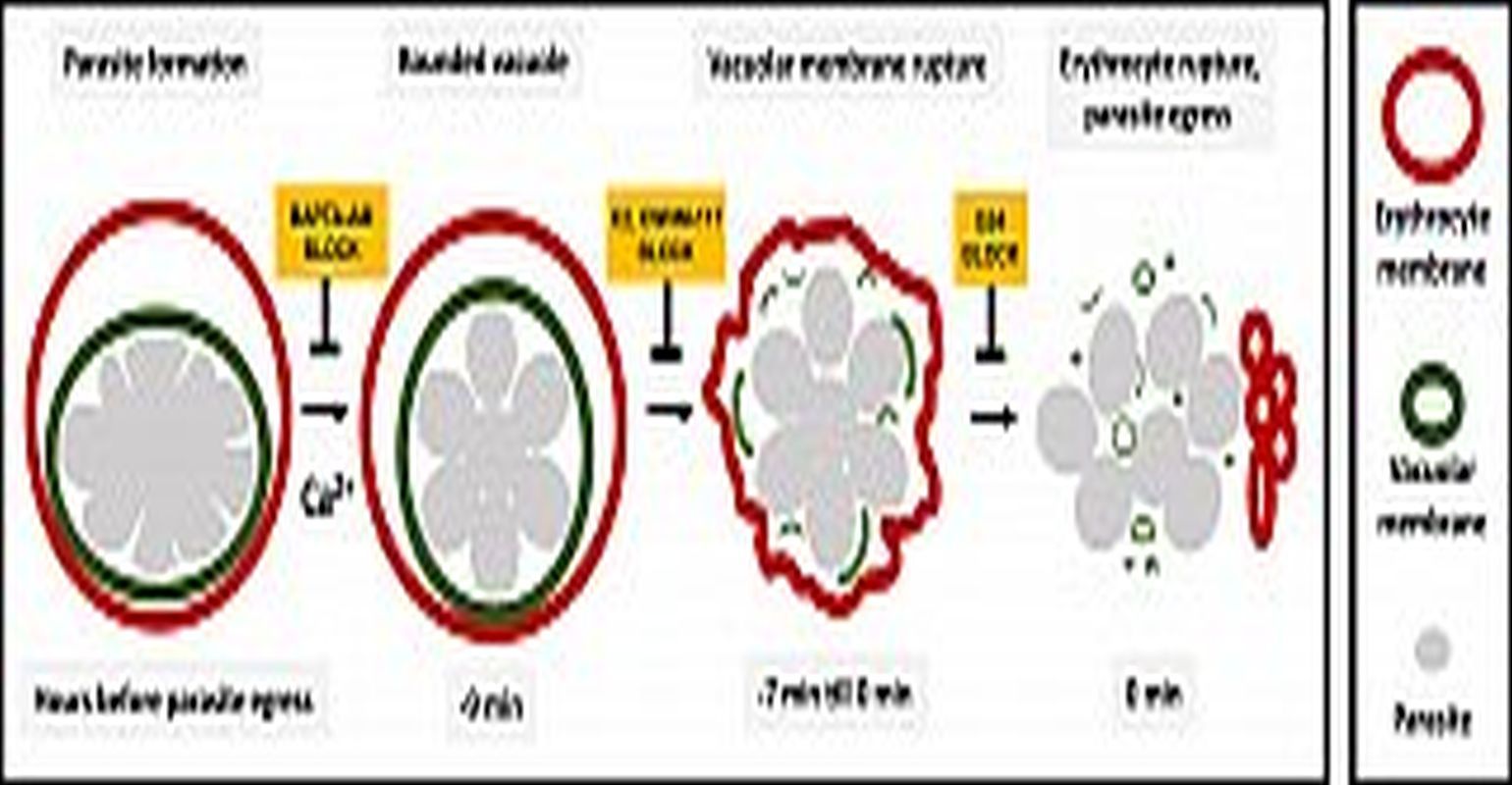NIH Researchers Identify Sequence Leading to Release of Malaria Parasites From Red Blood Cells

The vacuole, a compartment inside human red blood cells in which malaria parasites reproduce and develop, takes on a distinct spherical shape just minutes before its membrane ruptures, leading to the release of parasites into the blood stream, according to researchers at the National Institutes of Health and other institutions. Their study appears in Cellular Microbiology.
The researchers, working with red blood cells from healthy donors, were able to chemically block the sequence of events leading to this rounding of the vacuole. They note that targeting this sequence could inform new treatment strategies against Plasmodium falciparum, the species of malaria parasite that causes the most deaths worldwide and, in several areas, has become drug-resistant.
To track the rounding sequence under a microscope, researchers dyed the membrane of the vacuole with a substance that gives off green light. About 10 minutes before the membrane ruptured, the vacuole morphed from a lumpy, uneven shape to a sphere. Previous studies have shown that malaria parasites use calcium to trigger the biochemical reactions needed for their release from the cell. When the researchers treated the cells with a compound that blocks calcium’s effect, the vacuoles couldn’t transition to the spherical form, trapping the parasites inside the cell.
Reference: Glushakova S. Rounding precedes rupture and breakdown of vacuolar membranes before malaria parasite egress from erythrocytes. Cellular Microbiology. 2018;e12868. https://doi.org/10.1111/cmi.1286
Source: NIH
Robust infectious disease surveillance, including rapid subtyping of influenza A, is essential for early detection, containment, and public health reporting of novel viral threats.